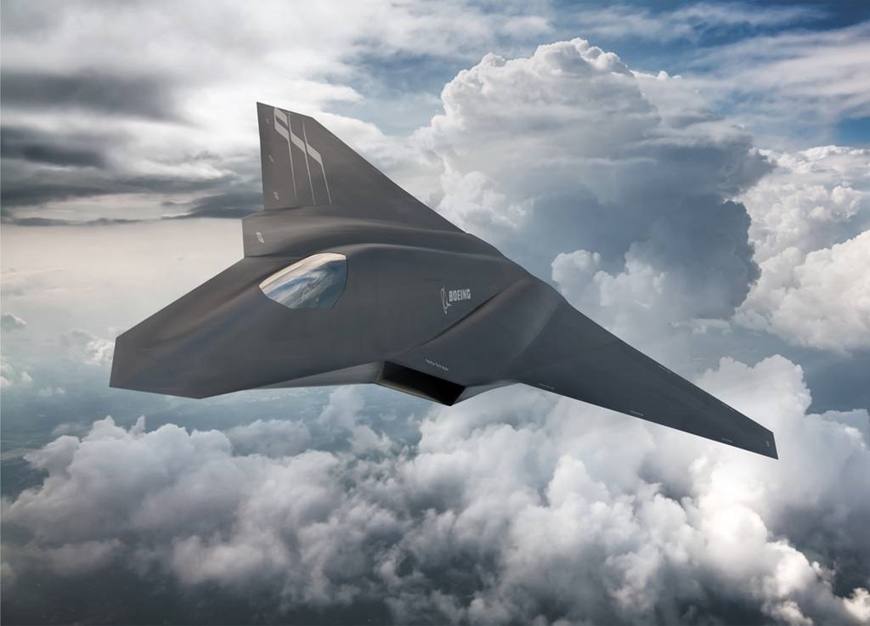Expensive fighter jets are about to appear of the US Air Force
Popular Mechanics, the US Air Force is preparing to launch a new fighter aircraft, part of the Next Generation Air Predominance (NGAD) program. These will be the most expensive fighter jets ever built.The 6th generation NGAD stealth fighter has strategic significance for the future structure of the US air force. They are expected to replace the F-22 Raptor by 2030, thereby contributing to optimizing the power of US forces in the Asia-Pacific region.

However, the price is one of the issues worth discussing today, when the new fighter model is expected to cost two or three times the cost of producing the F-35 – the most expensive aircraft in the world. . During a recent House Armed Services Committee meeting, when asked about the price of a future stealth fighter, Air Force Secretary Frank Kendall did not disclose the exact cost of an individual NGAD, but said that it could be hundreds of millions of dollars.
“This will be the most expensive fighter development program ever undertaken by the US Air Force. Each 6th generation fighter will cost several hundred million dollars. However, it will provide unprecedented capabilities with a high value of use,” said Minister Kendall.Boeing illustration of next-generation aircraft.
According to him, the sixth-generation fighter will include both piloted or unmanned versions, depending on the mission of ground attack, air superiority, or reconnaissance. The unmanned version costs less than half of the other version.
The NGAD program was initiated in the early 2010s to develop an air superiority system for the next decade. NGAD aims to create a network of fighters designed to work together, rather than focusing on a single weapon platform or technology.
In high-risk situations, drones, dubbed faithful bodyguards, will be assigned to carry out missions, keeping manned vehicles and pilots safe from harm.The US Air Force has invested more than $2.5 billion in the NGAD program since 2018 and this number is likely to grow to at least $9 billion by 2026. Popular Mechanics magazine estimates, the level of war competition. The strategy between the great powers has changed a lot since the 1980s, when the F-22 Raptor program was initiated and the NGAD clearly reflects this change.
In order to increase influence in the Asia-Pacific, the next-generation fighters in the NGAD program need to be able to operate over vast ranges of thousands of miles; flexible in combat, reconnaissance, can both dominate the air, and can perform the task of attacking targets at sea and on land.So how will NGAD be designed? Stephen Trimble, editor of Aviation Week & Space Technology, said that the new long-range fighter model will be capable of operating at altitudes above 21km, possessing supersonic speed and breakthrough technologies such as the ability to fly. stealth, artificial intelligence…
There are also speculations that to meet the needs of long-range operations, the NGAD model will be quite large, possibly as large as the F-111, a large long-range attack aircraft of the US Air Force that has been used by the US Air Force. was retired in the 1990s. The F-111 is 22m long, flies at an altitude of 18km, has a maximum take-off weight of 45,000kg and has a range of more than 4,800km.
Meanwhile, the F-22 is 19m long, flies at an altitude of more than 19km, has a maximum take-off weight of 35,700kg and has a range of 3,000km. These numbers show that if the US Air Force wants an air superiority fighter with a range that exceeds the F-22 (enough to fly from Guam to Okinawa, Japan and carry out reconnaissance missions). , hitting enemy targets), an F-111-sized plane is not too far off.Up to now, the US Air Force has kept completely secret about the future aircraft model due to fear of competition from rivals. However, they once affirmed that the new generation fighter will break all records of fighter aircraft. The aircraft development process was also focused on ensuring that despite the high initial production costs, upgrades and maintenance were inexpensive.





